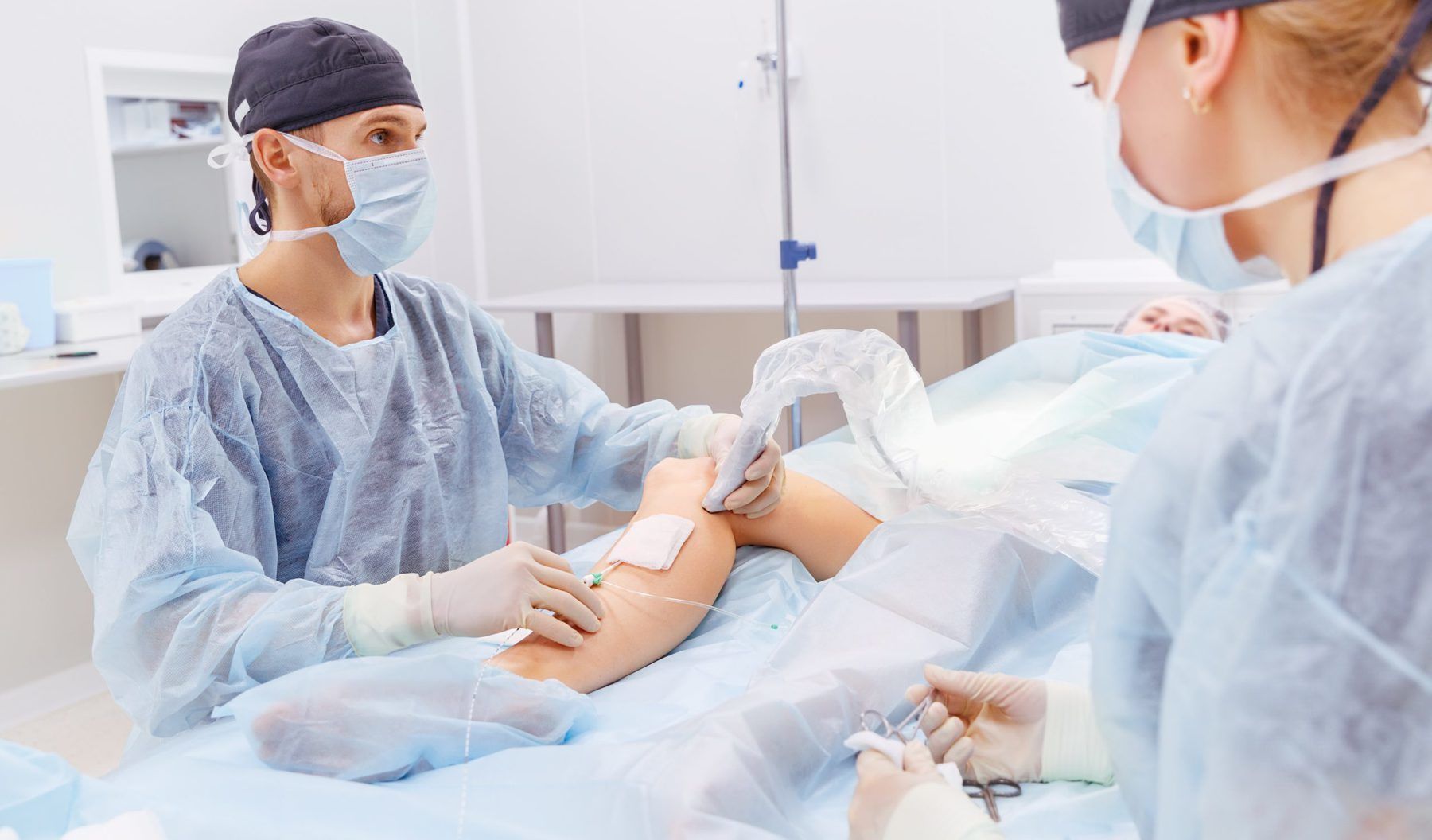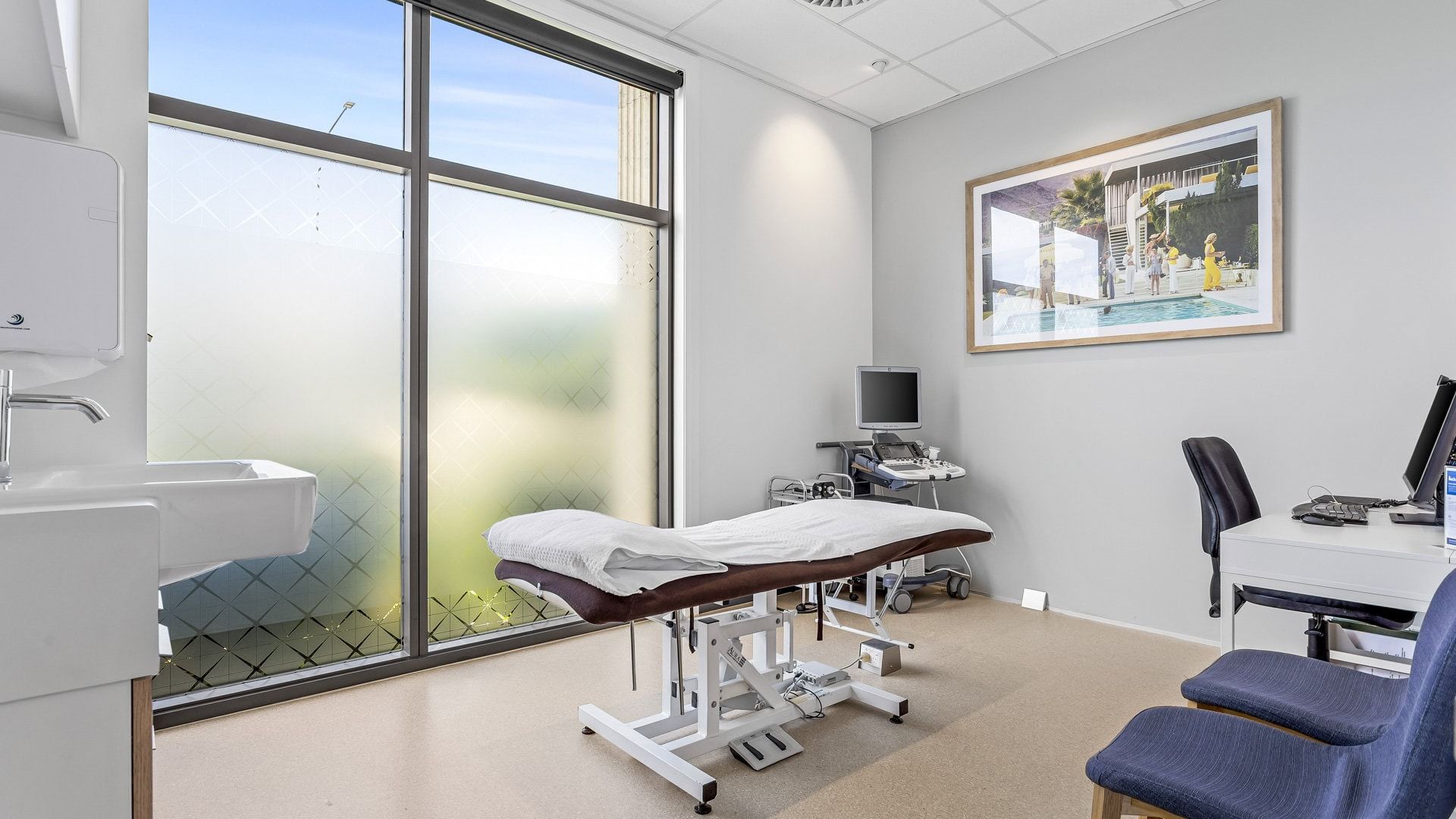Radiofrequency Ablation (RFA) for Varicose Veins – Auckland NZ
Treating varicose veins is an uncomplicated procedure that we have performed on over 13,000 clients in the past 30 years. Radiofrequency Ablation is the leading treatment option as it is non-invasive requiring no surgery, minimal downtime, and no scarring. You don’t need a GP referral to seek varicose vein treatment at our vein clinic in Auckland, NZ.

What is Radiofrequency Ablation NZ?
Treatment for varicose veins is now easier and less painful than ever with Radiofrequency Ablation (RFA). RFA is recognised as the leading treatment for varicose veins because it delivers the longest lasting results with the least amount of discomfort.
Radiofrequency Ablation (RFA) is a clever technology that heat seals the faulty vein – a process known as varicose vein ablation. This diverts blood flow to healthier veins, improving circulation and the appearance and symptoms of varicose veins.
RFA is a walk in, walk out treatment so in most cases you don’t need to take time off work or away from the things you enjoy.

The varicose vein treatment room at Palm Clinic in Parnell.
Radiofrequency Ablation For Varicose Veins
When blood circulates around the body, it travels from the legs to the heart through the veins. Inside these veins, one-way valves help the blood flow. If these valves begin to fail and no longer operate as they should, blood begins to pool in the legs causing the veins to become enlarged, discoloured, and the affected area to swell and ache – this is known as chronic venous insufficiency or varicose veins.
Radiofrequency Ablation for varicose veins is the process of closing off, or ‘ablating’ the affected vein, which improves blood flow and reduces the pain and swelling caused by varicose veins.
Radiofrequency Ablation (RFA) for chronic venous insufficiency is a clever technology that involves feeding a catheter (a long thin tube) up the inside of the faulty vein and then, once it’s anaesthetised, heating the vein up to seal it closed. Once the varicose vein is closed, the body absorbs it away over a number of months. The venous blood flow is diverted through deeper, more effective veins meaning an improved venous system and a resolution of varicose vein symptoms (aching, throbbing, and heavy swollen legs).
There is no general anaesthetic required. The procedure is done using local anaesthetic making it safer and faster to recover from. The whole procedure takes one to two hours.
Many people are understandably anxious prior to the procedure, but are usually pleasantly surprised that it was faster and more comfortable than they imagined it would be. Your comfort and safety are our priority.
Benefits Of Radiofrequency Ablation For Varicose Veins
RFA is the most effective varicose vein treatment available. The benefits of this approach include:
- Clinically proven to be less painful than Endovenous Laser Ablation (Endovenous Laser Therapy)
- Minimally invasive technique using local anaesthesia
- Walk in/Walk out procedure
- No general anaesthesia or surgery required
- Approved by the Food and Drug Administration (FDA) in the USA
- Closes faulty varicose vein pathways diverting blood flow to effective veins
- Improved venous circulation and resolution of symptoms
- Important precursor to treatment of spider veins
- Covered by Southern Cross and NIB Medical Insurance when medical necessity criteria are met
- Covered by most other Health Insurance companies in NZ
What Happens During Radiofrequency Ablation Treatment?
Prior to having treatment, we see you for an initial consultation and an ultrasound map of your varicose veins. During these sessions your treatment options are discussed and you will be given all the necessary information to prepare you for your treatment day.
On the day of treatment, you and your support person (if you wish to bring one) will be made comfortable in our pre-procedure room to talk through what is going to happen, answer any questions you may have, take your pre-procedure observations, and give you a gown and attire to change into.
Your Palm Clinic doctor will go through consent with you and ensure that any concerns are addressed. We place high importance on our consent process as it’s important to us that you feel as comfortable as possible. Take your time to ask any questions and feel free to write down a list of questions beforehand so that we can help you to feel informed and in control.
You are then taken to the treatment room where we will make you comfortable on the bed. Our ultrasonographer will mark your leg (or legs) and align what we see on your ultrasound map to what we are seeing on your leg.
Your leg will be prepared with chlorhexidine wash and a local anaesthetic will be used to numb the entry site for the catheter. Once access is gained, we feed the catheter up the faulty vein which usually can’t be felt. With ultrasound guidance we ensure proper placement of the catheter and then use local anaesthetic along the length of the catheter.
Next we turn on the radiofrequency energy. You will not feel this procedure due to the local anaesthetic. Following the radiofrequency procedure, we proceed to ultrasound guided sclerotherapy for the smaller veins.
Finally we dress the entry site and put on your custom fitted compression stockings. You will then walk back to your room to change and go for a walk. We will ensure your safety and comfort before you leave the clinic.
You will leave with an information sheet that has your Palm Clinic doctor’s after hours contact details and your post-treatment instructions on it, as well as what to expect afterwards. We then like to see you for a check around one week after the procedure, and will continue to provide follow-up care for one year after your treatment.
Radiofrequency Ablation Treatment Aftercare
Aftercare instructions include:
- Compression stockings: Wear for 24 hours a day for the first three days, followed by day time use for 11 days
- Walking: Walk for 30 minutes twice per day for two weeks
- Exercise / straining: Avoid for two weeks
- Alcohol: Avoid the day of treatment
- Overseas travel: Avoid long haul travel for one week prior and two weeks after treatment. There is no need to avoid domestic flights.
After two weeks you can return to normal activity. We suggest easing back into your exercise and listening to how your leg feels as you increase intensity over the coming weeks.
It is normal to expect to feel firm, tender lumps and/or a firm cord-like structure just beneath the skin for several months following treatment. This is the closed faulty vein and a sign the treatment is working. These will slowly dissipate over a number of months.
There is a 1/1000 chance of experiencing a deep vein thrombosis. The symptoms/signs of this could be pain deep within your calf muscle, or significant swelling of the affected leg. Please contact the clinic if you have any concerns regarding this rare side effect.
There is a 1/5000 chance of experiencing a pulmonary embolism. The symptoms/signs of this are chest pain, breathing difficulties, persistent cough or coughing blood. If you experience any of these exceedingly rare symptoms please call 111 for an ambulance.
Varicose Veins Treatment Costs
All Inclusive Costs: Vein treatment isn’t a ‘once and done’ process, it requires an initial treatment and two or more follow up treatments to achieve optimal results. Our varicose vein treatment cost is all inclusive for 12 months so our clients are able to have as many follow ups as needed to ensure they receive the best possible results. No GP referral is required, you can call us directly to book.
Best In Class Treatments: We provide a premium service which includes consultation with a Phlebologist (vein doctor) instead of a nurse to ensure optimal care, and treatment using Radiofrequency Ablation (RFA) which is proven to be more effective and less painful than other treatments such as Laser Ablation (EVA) and Medical Sealant. Where RFA is not appropriate we use Ultrasound Guided Sclerotherapy (UGS) which is recommended as the best alternative treatment.
Insurance and Finance Options: Health insurance generally covers varicose vein treatment costs where medical necessity applies, for example if you’re experiencing pain. We are an affiliated provider to Southern Cross and a preferred provider to NIB, and are covered by most other insurers. If you are with Southern Cross or NIB we can take care of the paperwork for you. For clients seeking treatment that is not funded by insurance, we offer interest free payment plans through Q-card.




Radiofrequency Ablation Before and After Photos
Browse our gallery of varicose veins pictures showing before and after Radiofrequency Ablation Treatment.

